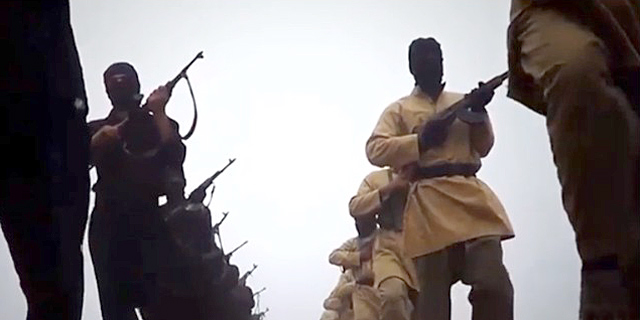Two incidents which we noted on Wednesday shed a bit of light on the battle between insurgents and the Islamic State of Iraq and as-Sham, now entering its third week.
They illustrate that, far from this being an organized showdown between the two blocs, the conflict is often made up of small groups encountering others who become sudden allies or enemies.
An ISIS fighter writes about a skirmish in Maskana in Aleppo Province with members of Ahrar al-Sham, a key group in the Islamic Front. He says his group drove the men from Ahrar out of a sugar farm.
That fits the wider narrative of ISIS v. the Islamic Front. But this passage adds a twist: “May Allah reward our brothers in Jabhat An Nusra fully. They supported us in the wiping out of the pigs.”
So, in this clash, members of the Islamist faction Jabhat al-Nusra fought with ISIS. However, the leadership of Jabhat al-Nusra works with the Islamic Front, while calling for a halt to in-fighting.
The answer to the conundrum? At local level, small groups of fighters may call themselves “Jabhat al-Nusra”, but choose to fight with ISIS — or against it.
Then there is this item:
The predominantly North Caucasian faction Jaish al-Muhajireen wal Ansar has been deployed to Naqqarin north of Aleppo city, where the regime has launched an offensive, according to Kavkaz Center, a Chechnya-based pro-jihad website close to the leader of JMA, Salahuddin Shishani.
The former leader of Jaish, Abu Umar al-Shishani, is now an ISIS Emir, taking some of the foreign fighters with him. However, most of Jaish has distanced itself from ISIS — and the move near Naqarin, taken by regime forces earlier in the week, points out that the battle with Assad’s forces still is the main concern of that group, whatever the state of the insurgency v. ISIS conflict.
News is frustratingly limited from northern Syria, making an overall reading of the “war within a war” difficult.
However, a general starting point is that, in some headline cases, either the insurgency or ISIS has taken the upper hand because of organization and resources. When groups of the Islamic Front, Syrian Revolutionary Front, and Jaish al-Mujahideen have been able to co-ordinate operations, they have pushed ISIS out of towns such as al-Dana in northwest Syria and out of areas in the east.
ISIS, after initial setbacks and withdrawals, has been able to regroup at key points. So it has re-asserted control of Raqqa, the largest city taken from the regime, and has rallied in Aleppo city and parts of ALeppo Province.
But much of this conflict is being fought at a far less organized, far more muddled level of individual units, some with loose affiliations to any bloc. That points to a protracted, unresolved “mini-war” unless there is a high-level proclamation from both the Islamic Front and ISIS to stop the fighting.

